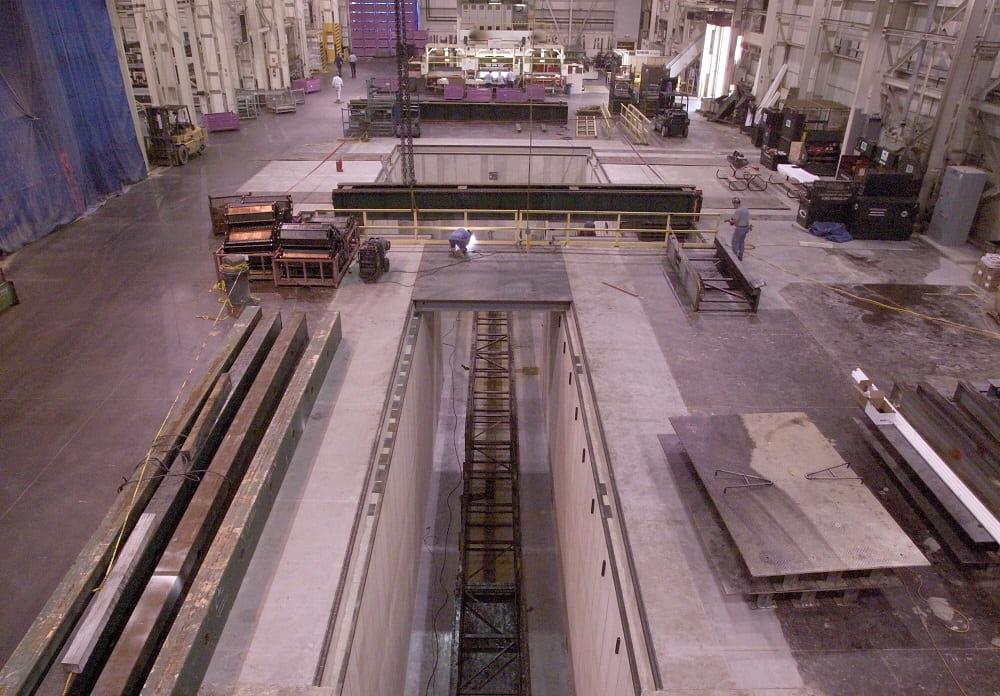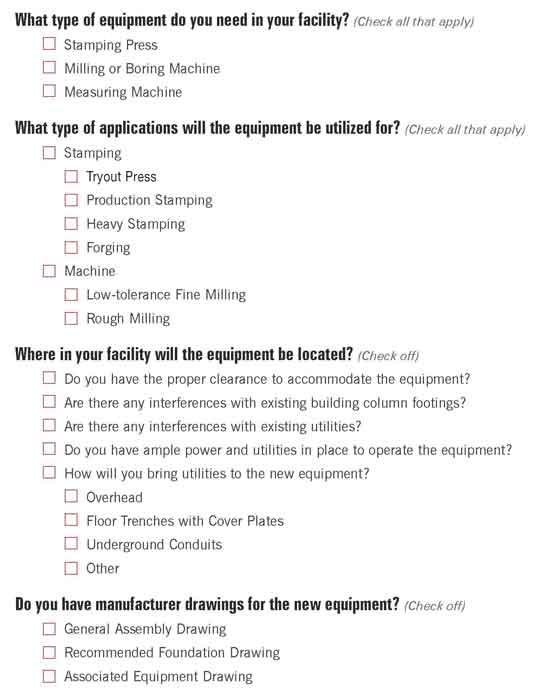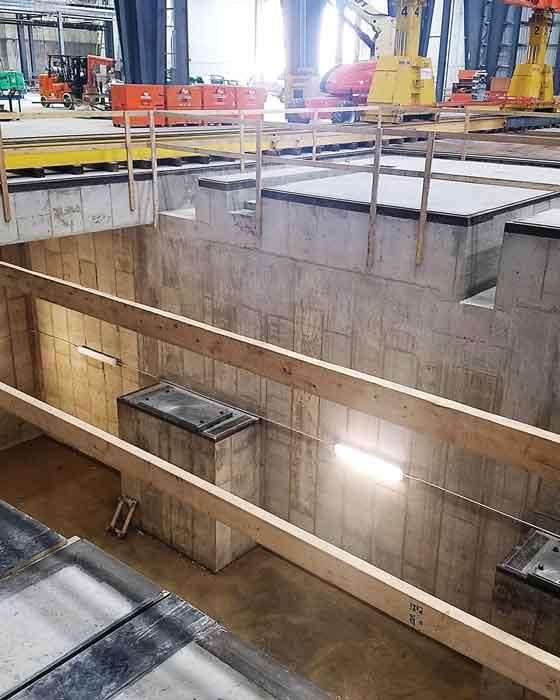Vice President
- FMA
- The Fabricator
- FABTECH
- Canadian Metalworking
Categories
- Additive Manufacturing
- Aluminum Welding
- Arc Welding
- Assembly and Joining
- Automation and Robotics
- Bending and Forming
- Consumables
- Cutting and Weld Prep
- Electric Vehicles
- En Español
- Finishing
- Hydroforming
- Laser Cutting
- Laser Welding
- Machining
- Manufacturing Software
- Materials Handling
- Metals/Materials
- Oxyfuel Cutting
- Plasma Cutting
- Power Tools
- Punching and Other Holemaking
- Roll Forming
- Safety
- Sawing
- Shearing
- Shop Management
- Testing and Measuring
- Tube and Pipe Fabrication
- Tube and Pipe Production
- Waterjet Cutting
Industry Directory
Webcasts
Podcasts
FAB 40
Advertise
Subscribe
Account Login
Search
7 questions to consider when installing a stamping press pit
Achieving a timely, successful press pit and foundation installation in a manufacturing facility
- By Tom Lytle
- December 4, 2019
- Article
- Bending and Forming

To ensure successful and timely construction for stamping press pits and foundation installations, manufacturers should consider the answers to these seven questions.
If done properly, installing a press pit or machine foundation can be done smoothly and relatively quickly. Conversely, if all aspects are not taken into consideration and planned for, the installation can be disruptive and drawn out at best and a money pit at worst.
To realize a timely and successful press pit and machine foundation installation, foundation contractors will need to obtain certain information upfront. Stamping manufacturers that prepare for this important installation and have an understanding of what to expect can help facilitate a smooth landing for their press pits and foundations. Provide the answers for these seven questions ahead of time so you can help ensure a successful and timely construction.
1. What types of applications will the press or machine be used for?
Obviously, the application for the press or other equipment will determine the size, depth, and construction of the pit or foundation. These applications include:
Tryout press
Production stamping press
Blanking and heavy-gauge stamping press
CNC machining center
Low-tolerance fine milling machine
Rough milling machine
Are you using a tryout press with low cycle numbers or a high-speed production press? Are you stamping light-gauge material or thick material? Are you blanking or forming a finished product? All of these factors can influence the design requirements for your press foundation.

Your optimal foundation or pit installation starts with a checklist that lays out all considerations to avoid costly changes afterward.
Will scrap be handled manually at the finish floor elevation or via some sort of mechanical handling system, such as a conveyor below ground? Scrap tunnel with floor covers (concrete or steel) may be required for an underground system.
2. Where in your plant will the equipment be located?
This information is key for a number of reasons.
First, you’ll need to be sure you have proper clearance to accommodate the equipment. You’ll also need to know if there is any interference with existing building column footings or utilities.
You’ll want to make sure that the press is located optimally for your process flow, because you will want to move your multiton press only once.
3. Are your utilities sufficient for the new machine?
Does your building have ample power and utilities in place to operate the equipment? If so, how will you bring utilities to the new equipment? Will it be overhead, through floor trenches with cover plates, via underground conduits, or other means?
This is definitely something you’ll need to have figured out before the press is installed rather than after.
4. Do you have machine OEM drawings for the new equipment?
Ideally, you’ll be able to provide the foundation contractor with the general assembly drawing, recommended foundation drawing, and associated equipment drawing.
5. Do you have a geotechnical report?
If you haven’t yet gotten a geotechnical report, it’s a good idea to do so. It is vital to those building the press pit and machine foundation to understand the condition of the soil present in the proposed foundation area. Additionally, if there is groundwater in the area, this needs to be addressed.
Once all of this is decided, there may be some required modifications, particularly if it’s determined that you will need to work with special backfill material, geotextile fabric or piles (refusal, friction, helical, and so forth).
6. Are there any vibration-related concerns to or from the new equipment?
As you prepare to install new equipment, you’ll need to be aware of any sensitive machinery in the area that may be impacted by vibration. Furthermore, will the new equipment be affected by existing plant operations. You may want to conduct a vibration study to answer these questions.

Stamping manufacturers that prepare for press pit and foundation installations and have a good understanding of what to expect can help facilitate a smooth landing.
You’ll also need to consider whether vibration control measures should be installed. You have a number of options here, including perimeter foam or fabric materials, horizontal fabric materials, additional concrete mass, and specialized pads or mounting systems.
7. How will construction processes affect your current plant flow and production?
Obviously, you’ll want to minimize downtime, so the construction process should be carefully planned to consider its effects on the plant’s operations. The foundation contractor will need to know that a construction route has been defined to get materials in and out of the facility.
Also, if there are special concerns regarding housekeeping and dust control, they should be relayed upfront.
Success Is in the Planning
Obviously, there’s a lot to consider. Gathering and cultivating all of the needed information ahead of time will guarantee success in all facets of the project, regardless of the scope of the work you need. After all, success is in the details.
Tom Lytle is vice president of Delta Industrial, 51825 Gratiot Ave.,Chesterfield, MI 48051, 586-598-1390, tlytle@deltaconcrete.com, deltaconcrete.com.
About the Author
subscribe now

The Fabricator is North America's leading magazine for the metal forming and fabricating industry. The magazine delivers the news, technical articles, and case histories that enable fabricators to do their jobs more efficiently. The Fabricator has served the industry since 1970.
start your free subscription- Stay connected from anywhere

Easily access valuable industry resources now with full access to the digital edition of The Fabricator.

Easily access valuable industry resources now with full access to the digital edition of The Welder.

Easily access valuable industry resources now with full access to the digital edition of The Tube and Pipe Journal.
- Podcasting
- Podcast:
- The Fabricator Podcast
- Published:
- 04/30/2024
- Running Time:
- 53:00
Seth Feldman of Iowa-based Wertzbaugher Services joins The Fabricator Podcast to offer his take as a Gen Zer...
- Industry Events
Pipe and Tube Conference
- May 21 - 22, 2024
- Omaha, NE
World-Class Roll Forming Workshop
- June 5 - 6, 2024
- Louisville, KY
Advanced Laser Application Workshop
- June 25 - 27, 2024
- Novi, MI
Precision Press Brake Certificate Course
- July 31 - August 1, 2024
- Elgin,































